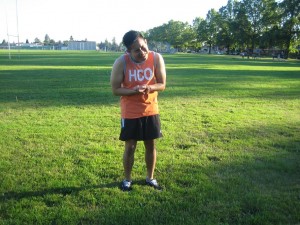Amputation is the detachment of a body part. Amputation is a violent form of trauma that happens such as a cut or involves tearing of the area. An accidental amputation usually involves the fingers, but it can happen to an entire limb. It can be complete, where the entire body part is completely removed or partial where a greater area of the body part is removed but still attached to the rest of the body.
Indications of accidental amputation
- Pain
- Bleeding can be minimal or severe which depend on the nature of the injury, location and type of blood vessel that is injured.
- Distorted bodily tissues but still attached to the tendon, muscle or skin.
Bleeding can be minimal or severe which depend on the nature of the injury, location and type of blood vessel that is injured.
Treatment
- Stop the bleeding. A complete amputation will not cause severe bleeding. The cut vessel will spasm, pull back into the damaged part and shrink thus reducing and stopping the bleeding.
- The person who will provide first aid should first wash his/her hands with soap and water and wear latex gloves. If not available, use layers of clean cloth or other clean materials available between the hands and the wound.
- Lay down the affected person and elevate the bleeding area.
- Remove any jewelry such as rings to prevent difficulty removing it later.
- Remove any debris found in the wound that are easy to remove.
- Use a clean piece of cloth and place it on the wound and apply a pressure for at least 15 minutes. In case blood saturates the cloth, apply another layer without removing the first layer that was applied. In case there is an object in the wound, just apply pressure around the object and avoid putting pressure over the object.
- If bleeding becomes severe, continue applying pressure and get some help. Keep the affected area clean and avoid further injuring the area.
- Check for symptoms of physiologic shock such as feeling dizzy, losing conciousness, feeling very weak and difficulty standing up, restlessness, confused and fearful. Symptoms of emotional shock can include lightheadedness or fainting.
- Splint the affected area to prevent unnecessary movement that can worsen the condition.
Completely amputated part
- Take care of the amputated part of the body and bring to the hospital together with the injured person.
- Gently clean off dirt and any debris with clean water and avoid scrubbing the area.
- Wrap the amputated body part using dry and sterile gauze or a clean cloth. Place the wrapped body part in a plastic bag or waterproof container and place on ice to ensure that the amputated part stays cool. Avoid putting the body part directly on ice or covering with ice water. An amputed finger can remain viable for at least 18 hours. If it cannot be placed in cold water, avoid exposing the amputed body part in the heat.
Disclaimer
The material posted on this page for amputation is for learning purposes only. If you want to learn to proper proper wound care including for amputation, register for a first aid course with a training provider near you.

